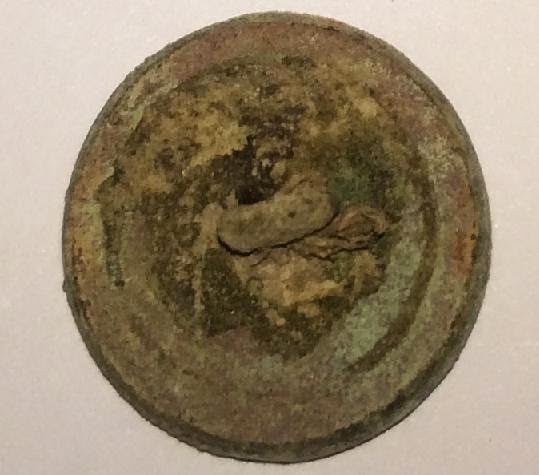Saturday I went back to the little camp I've been searching, but instead of returning to the same field, I decided to branch out to neighboring fields to see if the camp area extended out any further. Unfortunately I was detecting in a veritable sea of shredded aluminum cans, the bane of most every detectorist. I was only able to detect for a few hours, and the aluminum was driving me crazy, but I did manage one solitary keeper. This three ring Minie ball bullet has a star inside the base cavity, identifying it as a product of the Washington DC arsenal (now Fort McNair).
Like two dauntless warriors, Dustin and I geared up and headed back into the woods. Sure enough, the area was quite overgrown, and completely undetectable in many places. So we did the best we could, hoping to eek out some finds in the "hunted out" camp. Overall we did quite well in the several hours we were there, and I look forward to returning in the winter once the undergrowth has frozen and died back.
We will certainly make a return trip, as I know there is at least one more relic to be found. I was digging up a good sounding target (I KNOW it had to be a bullet, at the very least) when the ground opened up with a deluge of bees! I had dug right into their nest, and luckily high-tailed it out of there with only one sting. MAN did that hurt! Between that, the multitude of ticks I found upon returning home, the briars, and the sunburn, it's a wonder I still want to go out at all...
But I can't wait to go back! Until next time, be safe out there everyone!







